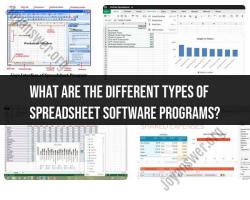What is the pricing strategy in the consumer electronics industry?
Pricing strategies in the consumer electronics industry can be complex due to the rapid technological advancements, competition, and consumer preferences. Here's an overview of some common pricing strategies and trends within the consumer electronics industry:
1. Skimming Pricing Strategy: This strategy involves setting a high initial price for a new and innovative product, targeting early adopters and those willing to pay a premium. Over time, the price is gradually lowered to attract a broader customer base. This approach is often used for cutting-edge electronics like smartphones and gaming consoles.
2. Penetration Pricing Strategy: In contrast to skimming, penetration pricing involves setting a low initial price to quickly gain market share. This can be effective in competitive markets or when introducing new products to attract price-sensitive customers. As the product gains popularity, the price may be raised.
3. Premium Pricing Strategy: Premium pricing is based on positioning a product as high-quality or exclusive, justifying a higher price point. Apple's products, for instance, often command premium prices due to their perceived design, functionality, and brand.
4. Value-Based Pricing Strategy: This approach involves setting prices based on the perceived value of the product to the customer. It takes into account the benefits the product offers compared to alternatives. Brands like Bose and Sony use value-based pricing for their audio products.
5. Dynamic Pricing Strategy: This strategy involves adjusting prices based on real-time market conditions, demand, and supply. Online retailers often use dynamic pricing to respond to fluctuations in demand or competitive pricing.
6. Bundling Pricing Strategy: Bundling involves offering multiple products or services together at a lower price than if they were purchased individually. This can increase perceived value and encourage customers to purchase more. For instance, offering a smartphone with accessories or a software package.
Consumer Electronics Industry Trends:
Sustainability and Environmental Impact: Consumers are increasingly conscious of the environmental impact of their purchases. Brands that emphasize sustainability and eco-friendly practices may command a premium price from environmentally conscious consumers.
Subscription Models: Some companies are moving towards subscription-based pricing models, where customers pay a recurring fee for access to products and services. This model is seen in streaming services, cloud storage, and even smartphones in certain cases.
Trade-Ins and Upgrades: Many electronics companies offer trade-in programs, allowing customers to exchange older devices for discounts on new ones. This encourages customer loyalty and promotes regular upgrades.
E-commerce and Direct-to-Consumer (DTC): Online sales and direct-to-consumer models have gained momentum, allowing brands to have more control over pricing and customer relationships. This has also led to increased price transparency and comparison shopping.
Competitive Pressure: The consumer electronics industry is highly competitive, with multiple brands vying for market share. This competition can influence pricing decisions as companies strive to offer attractive prices to gain an edge.
Innovations and Product Differentiation: Rapid technological advancements and constant innovation can justify premium pricing for the latest features and functionalities.
Global Market Dynamics: Pricing strategies can differ based on geographic regions due to variations in purchasing power, local preferences, and competitive landscapes.
When considering pricing strategies, companies in the consumer electronics industry need to balance factors such as production costs, perceived value, competition, market trends, and customer preferences. Effective pricing strategies can play a crucial role in achieving business goals and maintaining profitability in a rapidly evolving market.












